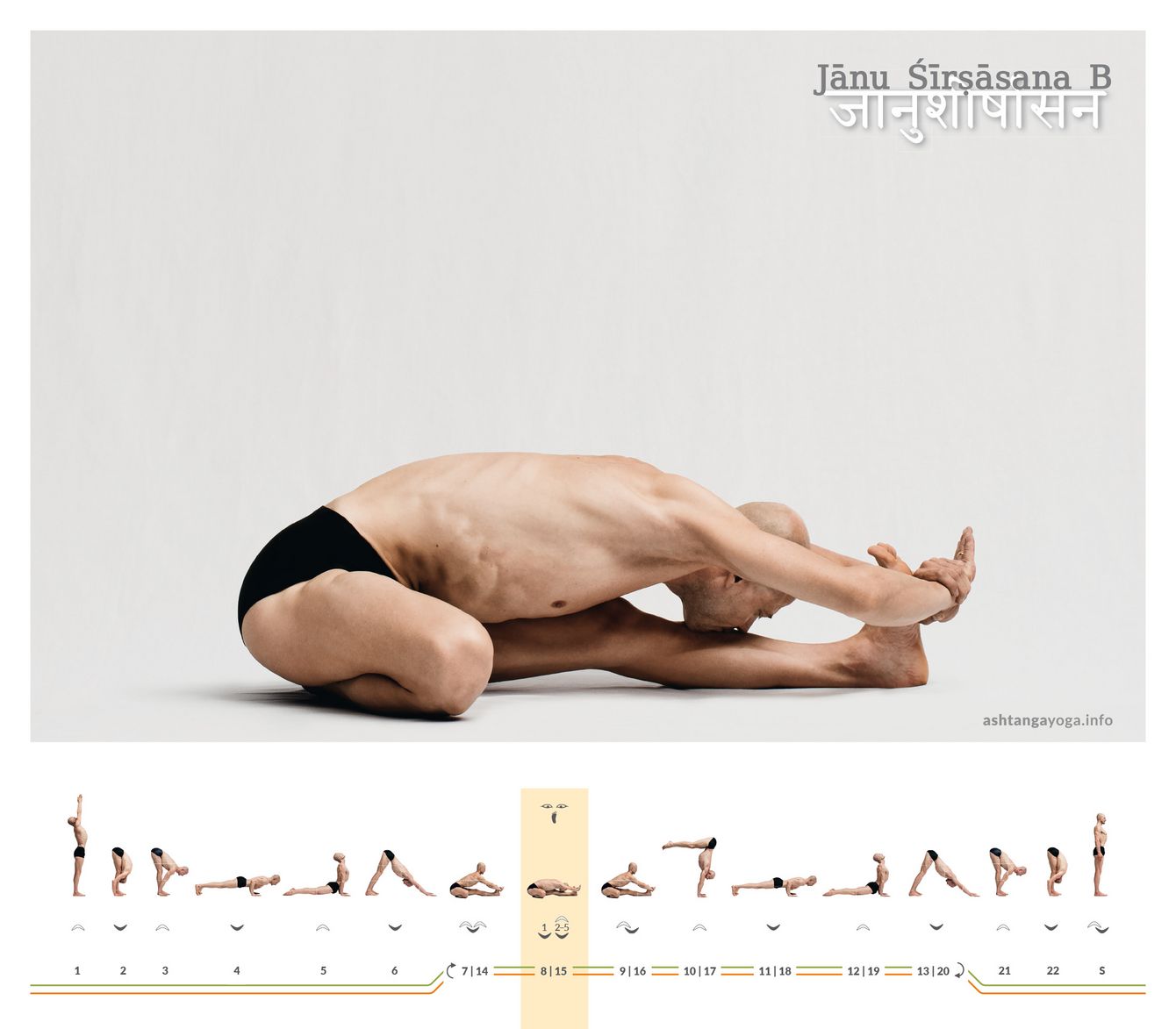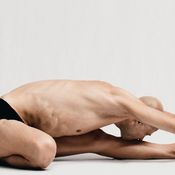

Directly from downward dog in the previous sequence of movements.
Vinyāsa 7: Inhale, Exhale, Inhale:
Inhale from downward dog as you slide your legs through and balance on your hands. Use the exhale to lower yourself down slowly between your arms. Bend your right leg until the sole of the foot rests as high up on the inner left thigh as possible. Let the right thigh relax outwards. Lift up your pelvis and place the perineum directly on top of the heel of the right foot. Grasp your right wrist with your left hand in front of your left foot. Lengthen the spine.
Note: If you point the foot, this exercise will be a bot easier (plantar flexion) and set the foot down under the left thigh. In this case the top of the foot is flat on the floor and your toes point outside of the left leg. You can do this, but it is a different pose. With Jānu Śīrṣāsana B, your foot stays in the same position as in the A variant. The outer edge of the foot lies on the floor and the heel is directly under the perineum and the toes are seen from the inner side of the left thigh.
Vinyāsa 8: Exhale, 5 Breaths:
Exhale and bend both elbows to the side and tilt the pelvis forward to come into the forward bend. Stay here until the fifth exhalation.
Try this: An important reflex when running and walking is for the hip to stabilize when the ankle loses its stability. This is exactly what happens in this pose. The foot sickles out (supination) under the pressure of the pelvis. Try consciously stabilizing the ankle. To do this, lift your shin slightly from the floor in internal rotation. You will feel the activation about the ankle, and thus your hip will be able to release a bit further and your right thigh may sink even further down as a result.
Vinyāsa9: Inhale, Exhale:
Inhale as you stretch both arms and straighten your back. Stay here for the exhale.
Vinyāsa 10 to 13:
Follow the flow of movements that you already know up to downward dog.
Vinyāsa 14 to 20:
Repeat the sequence of movements on the second side until you are again in downward dog.
In the traditional count, change here directly into the flow of movements of the next posture.
Effekt: The Variant B of Jānu Śīrṣāsana is also a hip opener. But by placing the heel under the perineum, you involuntarily tense the hip muscles. This is how the exercise reminds you of Mūla Bandha, or pelvic floor activation. Mūla Bandha stabilizes your torso. Over time you can learn to cultivate this throughout your entire physical practice.


 Dr. Ronald Steiner
Dr. Ronald Steiner
 Richard Pilnick
Richard Pilnick

Messages and ratings